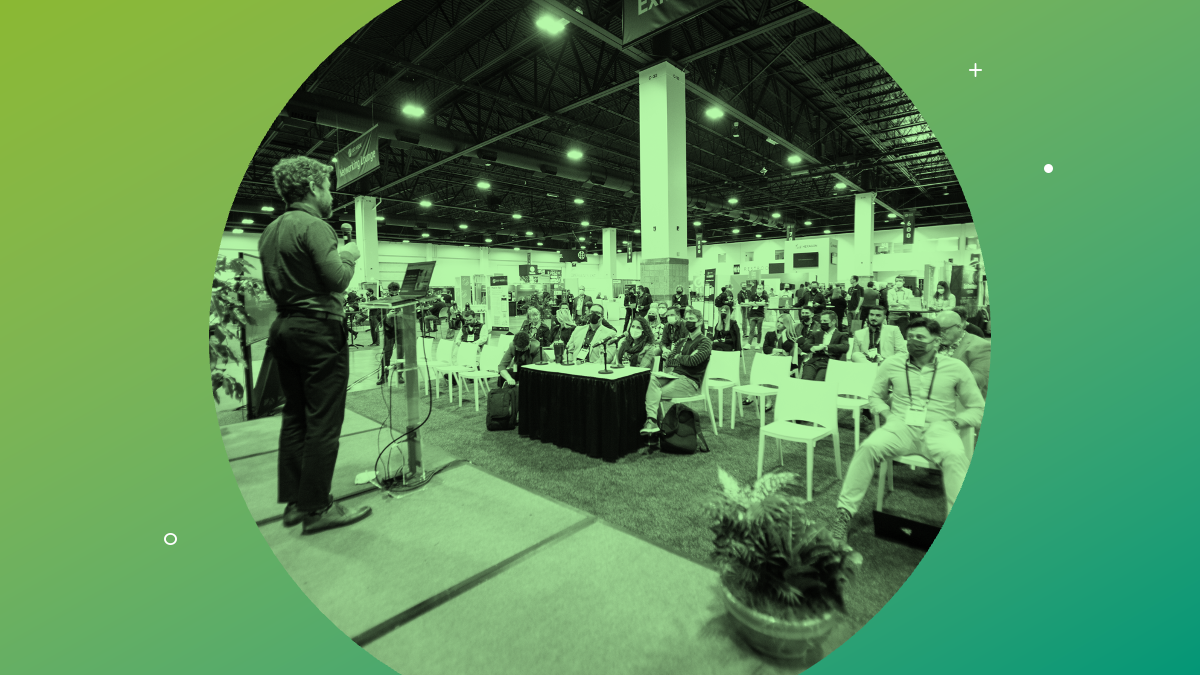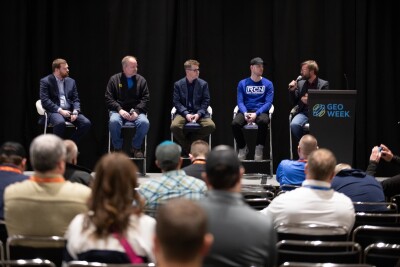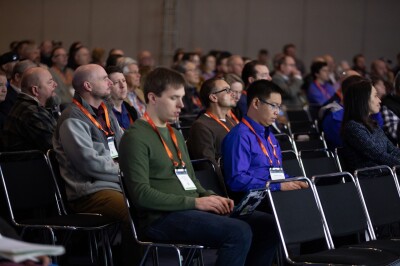We are now just six weeks away from the opening of Geo Week 2023, the premier event that champions the coming together of geospatial technologies and the built world. With a keynote scheduled with Esri founder Jack Dangermond giving a keynote, another keynote looking at where the AEC industry is in terms of digitalization, a world-class group of exhibitors, and a number of fascinating speaking sessions in rooms around facility throughout the three-day event, attendees can look forward to so much from this event in February.
February 11-13, 2024 | Colorado Convention Center | Denver, CO, USARegistration is Open for Geo Week 2024!
Unique Case Studies Showcase
This is one of the hallmark sessions every year at Geo Week, where speakers from different backgrounds come together and present use cases of lidar which we don’t typically think of. We all know the most common use cases for this laser scanning technology, whether it be surveying, stockpile monitoring, 3D modeling, or other cases like that. Sometimes, though, we come across people using lidar in ways we had never previously considered. In this session, attendees can hear about how lidar has been used for things like tracking centuries-old landscape history, looking for hunts about 18th century America, mapping monarch butterfly habitats, managing safety at tourist caves, and preserving historical buildings.
The Unique Case Studies Showcase session will be moderated by Sanjay Shenoy, from Nowak & Fraus Engineers. Presenting case studies will be: Carlos Femmer of HDR Engineering, Inc., Brad Barker of Surdex Corporation, Lieven Beuckx of LSBbvba, Jonathan Byham of GPI Geospatial, Inc., Mischa Hey of NV5 Geosptial, and Jason Richards of Maptek Pty Ltd. The session will take place on February 14 from 2:00-3:30 PM MT.
On the Cutting Edge: Geospatial Advances
Here we have the first session that will take place at the Exhibit Hall Theater for this year’s event, and it’s another with multiple presentations. Here, we will be looking at the future of the geospatial industry. This is clearly a space that prioritizes innovation, and it can feel impossible to keep up with the latest technology helping professionals more easily and effectively complete their daily tasks. It’s easier if you know what’s coming ahead of time. In this session, presenters will talk about things like satellite-derived data, sensor fusion, and streamlined workflows that could help define the industry moving forward.
Leading this session is going to be Ashley Chappell from the NOAA, and she will oversee presentations from Malek Singer of Teledyne Geospatial, Edward Albada of EOMAP USA, and Martin Pfennigbauer of RIEGL. This forward-looking session will take place on February 13 from 1:00-2:00 PM MT.
Diversity, Equity, And Inclusion: A Call to Awareness, Advocacy, and Action in the Geospatial Domain
DEI (diversity, equity, and inclusion) is one of the primary focuses for all industries around the world right now, and ours is certainly no exception. Although strides have been made in making the industry more diverse in all senses of the word, there’s little doubt that more work needs to be done. The first step of that work, though, is knowing what exactly that work looks like, and what steps are needed to make it happen. This session is going to focus on that next step of moving from DEI awareness to action.
This session will be led by the World Geospatial Industry Council, who actively supports several initiatives to highlight the value of DEI as a strategic imperative, with the WGIC’s Barbara Ryan being part of the panel discussion. Among the other panelists to speak on this session will be: Geo Week’s Carla Lauter, Albert Anoubon Momo of Trimble, Valrie Grant of GeoTechVision, Gertrude Namitala of Trudigital Technologies, and Denise Wong of Exyn Technologies. The DEI session will take place on February 14 from 11:00AM-11:45AM MT.
Neural Radiance Fields in Geospatial: Fad or Future?
One of the innovations in the reality capture space that is currently creating the most buzz is Neural Radiance Fields, or NeRFs. Essentially a NeRF is a neural network which is able to create a full 3D scene based on a partial set of 2D images from photographs. It’s technology we saw last year from NVIDIA, and the technology has only improved since then. That said, it’s still a new technology with open questions about its effectiveness, and just general confusion around the concepts.
This session, which will be led by EveryPoint’s Jonathan Stephens, will tackle the important questions – Do NeRFs work? Is the data georeferenced? Is it accurate? – and explain why geospatial professionals should start getting familiar with the technology. He’ll also provide steps on how one can get started with creating NeRFs. This session will take place on February 13 from 3:00-4:00 PM MT.
Recent small Uncrewed Aircraft Observations (sUAS) in Major Hurricane Ian
Often when we talk about these geospatial innovations, much of the focus is on how they can make life easier for enterprise-related use cases. It’s important, though, to remember that a lot of these technologies can be, and are, used for extremely important and life-saving endeavors. We saw a recent example of this late in 2022 when Hurricane Ian struck Florida. In this season, Joseph Cione of NOAA/OAR/AOML will join Commercial UAV News’ Scott Howe for a session detailing how NOAA and Area-I use small UAS missions for key support missions in the aftermath of this disaster. The session will take place on February 14 from 12:30-1:00 PM MT.






